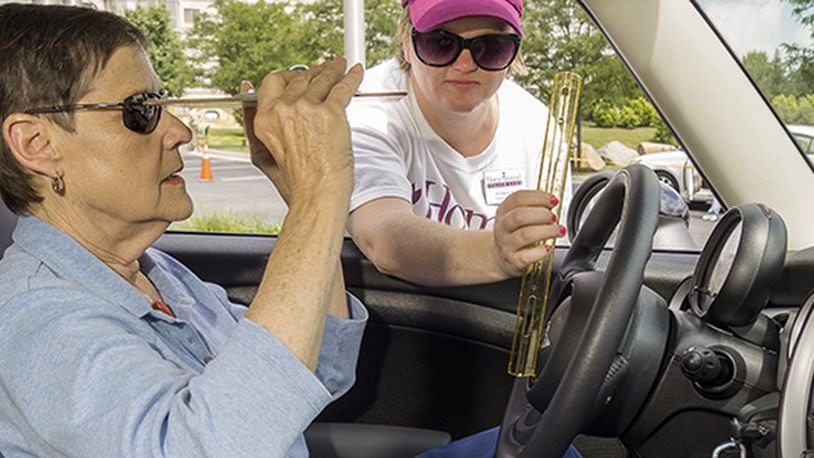››RELATED: Truck safety tech can prevent crashes
In a LongROAD study, more than 70 percent of senior drivers had experienced health conditions that impact muscles and bones such as arthritis, hip/knee replacement and joint pains. Some seniors in the study reduced their driving due to these conditions. The installation of certain devices like steering wheel covers can help lessen the impact of arthritis while larger mirrors and assistive devices on seats can help with limited neck mobility.
Researchers investigated 12 vehicle adaptations and found that fewer than nine percent of senior drivers reported using any of the devices in their vehicles. Some of the inexpensive devices that can be put to use in new or existing vehicles are:
Cushions and seat pads: Improves line of sight and can help alleviate back or hip pain.
Convex/multifaceted mirrors: Improves visibility and minimizes blind spots.
Pedal extension: Helps drivers obtain a safe distance from the steering wheel/airbag and optimize visibility.
Steering wheel covers: Improves grip for drivers with arthritic hand joints.
Hand controls: Allows the driver to perform all vehicle maneuvers and functions without the use of lower extremities.
Nearly 90 percent of older drivers do not make inexpensive adaptations to their vehicles that can improve safety and extend their time behind the wheel. These common vehicle adaptations can help improve safety by reducing a senior driver’s crash risk. Seniors aged 65 and over are more than twice as likely as younger drivers to be killed when involved in a crash. AAA urges seniors to consider making the necessary adaptations to their vehicles in order to reduce crash risk and extend the time they can continue to drive.
Choosing the right features and working with a trained technician is imperative to safety behind the wheel. Of those drivers who have a device, almost 90 percent reported that they did not work with a trained professional to install the modification, a key recommendation by both the National Highway Traffic Safety Administration (NHTSA) and the American Occupational Therapy Association (AOTA). AAA urges drivers to consult with a trained technician to guide them in making adjustments to their vehicle.
Vehicle adaptions also benefit seniors’ mental health by extending their time on the road. Previous research from the AAA Foundation for Traffic Safety shows that seniors who have stopped driving are almost two times more likely to suffer from depression and nearly five times more likely to enter a long-term care facility than those who remain behind the wheel.
AAA urges senior drivers to consider getting a CarFit check-up. This program helps senior drivers better utilize the features and technologies in their vehicles. The community-based program allows trained professionals to conduct a quick, yet comprehensive 12-point check of a senior’s personal vehicle and make recommendations for needed adjustments or adaptations. Older drivers can sign up for an event online. AAA also offers the Smart Features for Older Drivers tool, which can help senior drivers identify in-expensive devices and vehicle features that optimize their comfort and safety.
Every month in Life, Cindy Antrican, Dayton-based public affairs manager for AAA Allied Group, Inc., provides traffic safety tips and information for motorists. Email: CAntrican@aaa-alliedgroup.com.
About the Author
